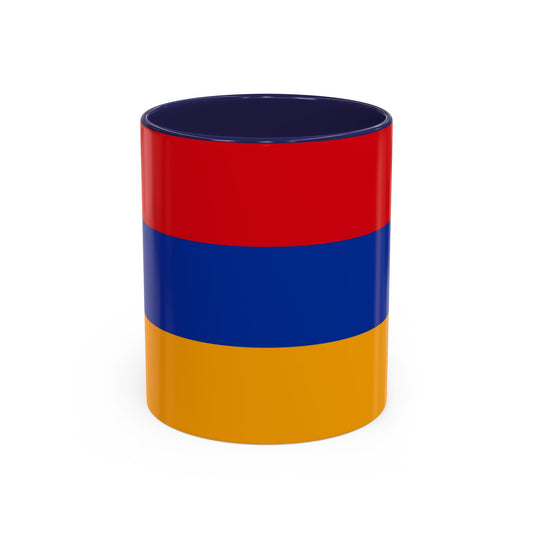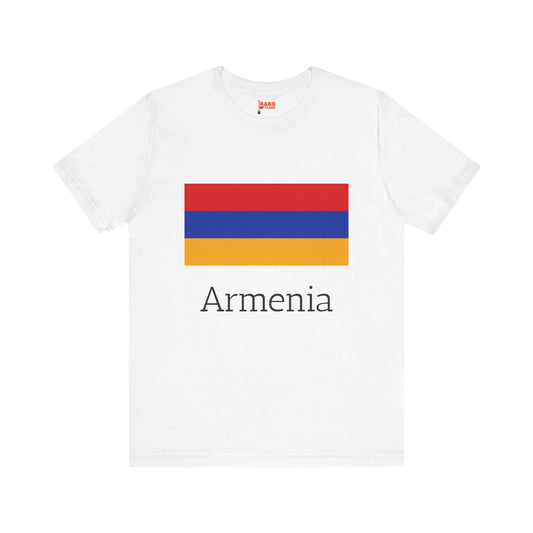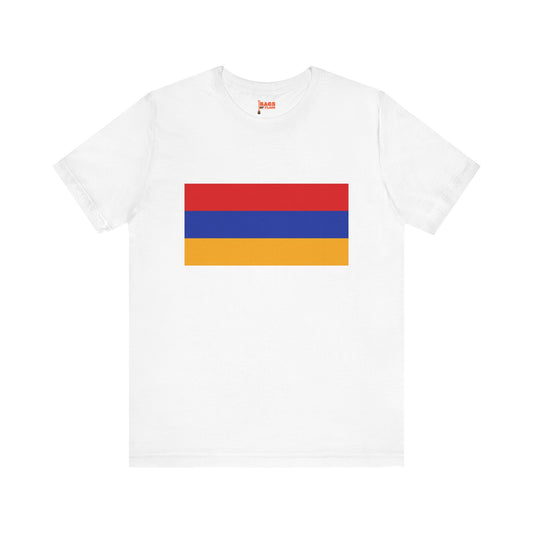-
Armenia Pillow
Regular price $22.65 USDRegular priceUnit price / per -
Armenia Backpack
Regular price $59.79 USDRegular priceUnit price / per -
Armenia Leather Patch Hat
Regular price $18.85 USDRegular priceUnit price / per -
Armenia Sweatshirt
Regular price $34.15 USDRegular priceUnit price / per -
Armenia Flag Sweatshirt
Regular price $34.15 USDRegular priceUnit price / per -
Armenia Mug
Regular price $11.65 USDRegular priceUnit price / per -
Armenia Trucker Cap
Regular price $14.90 USDRegular priceUnit price / per -
Armenia Hoodies
Regular price $34.40 USDRegular priceUnit price / per -
Armenia T-shirts
Regular price $22.79 USDRegular priceUnit price / per -
Armenia Flag Hoodies
Regular price $34.40 USDRegular priceUnit price / per -
Armenia Flag on T-shirt
Regular price $22.79 USDRegular priceUnit price / per
Collection: Armenia
The Armenian flag, with its vibrant colors and rich history, is a symbol of pride and identity for the Armenian people. We will delve into the design, historical context, symbolism, and current relevance of the Armenian flag, exploring how it has evolved and its significance for Armenians worldwide.
Overview of the Armenian Flag's Design and Colors

The flag of Armenia showcases a trio of horizontal stripes, each of equal width but distinguished by their vivid hues: red on the top, followed by blue, and then orange at the bottom. Each color on the flag carries a profound meaning deeply embedded in the fabric of Armenian history and culture. The top stripe of red symbolizes the blood shed by Armenians throughout their history, particularly during their fight for survival and freedom.
The central blue band represents the will of the people to live beneath peaceful skies, reflecting a longing for tranquility and stability after centuries of turmoil. The bottom stripe of orange captures the fertile soil of the Armenian highland and the dynamic spirit of its people, highlighting their creativity, determination, and hard work. Together, these colors not only represent the physical and spiritual landscape of Armenia but also narrate the resilience and enduring hope of its people. This vibrant tricolor serves as a beacon of Armenian identity, embodying the nation's struggles and aspirations for the future.
Historical Context: From Adoption to Present Day

The official adoption of the Armenian flag on August 24, 1990, marked a pivotal moment in the nation's history, symbolizing Armenia's newfound independence from the Soviet Union. The flag's design roots stretch back to the establishment of the First Republic of Armenia in 1918, during which the tricolor was first utilized by the Armenian independence movement. This period was characterized by a vigorous push for self-determination and national sovereignty amidst the collapse of the Russian Empire and the ensuing chaos of World War I.
Despite the brief existence of the First Republic, which lasted until 1920 before Armenia became part of the Soviet Union, the flag's design endured through the decades, embodying the aspirations and resilience of the Armenian people. Throughout the Soviet era, the flag was suppressed and replaced by Soviet symbols and the red banner. Its resurgence in 1990, therefore, not only represented a return to national independence but also a reclamation of Armenia's historical and cultural identity. Since its re-adoption, the flag has remained unchanged, standing as a testament to the enduring spirit and unity of the Armenian people in the face of historical challenges and transformations.
Symbolism: Interpreting the Armenian Flag's Colors and Design
At the heart of the Armenian flag's colors lies a rich tapestry of meanings, each conveying a unique aspect of Armenia's national narrative. The red stripe at the top symbolizes the blood and sacrifice of Armenians who laid down their lives in the pursuit of freedom and sovereignty. This vivid color evokes the enduring resilience that has characterized Armenia's history, marked by survival against overwhelming odds. The central blue stripe embodies the Armenian people's hope for peace and the tranquility of the nation's skies, signifying their eternal quest for a serene and stable existence in a turbulent region.
Meanwhile, the orange stripe captures the essence of the Armenian land, symbolizing the fertile earth that has sustained generations and the hardworking nature of its people. This color reflects the dynamic and creative spirit that has propelled Armenia forward despite its many challenges. Together, these stripes are more than just colors; they narrate a story of struggle, hope, and perseverance, encapsulating the indomitable will of the Armenian people to thrive and maintain their sovereignty and cultural identity amidst the ebb and flow of history.
Current Relevance: The Armenian Flag in Today's Context
In the modern landscape, the Armenian flag is a prominent national solidarity and identity emblem, visible at various significant events ranging from solemn military ceremonies to vibrant cultural festivals. It flutters atop government and educational institutions, symbolizing the nation's sovereignty and enduring spirit. The flag's importance extends beyond mere representation; it is a rallying point during times of national significance, including commemorations of the Armenian Genocide, where it serves as a poignant reminder of resilience and unity in the face of adversity.
Moreover, the flag has been entwined in international dialogues and disputes, notably the tensions in Nagorno-Karabakh, reflecting Armenia's complex geopolitical standing and the ongoing quest for peace and recognition. Its presence in these contexts underscores the flag's role as a national symbol and an emblem of Armenia's aspirations on the world stage. Amidst these circumstances, the flag fosters a sense of community and belonging among Armenians within the homeland and across the global diaspora, reinforcing the bonds that tie them together regardless of the distance.
Additional Facts: Protocols and Anecdotes Surrounding the Armenian Flag
Clear guidelines ensure the Armenian flag's respect and dignity are maintained at all times. These protocols dictate that the flag must always be flown in a prominent position, higher than any other national flag, when displayed alongside it. Additionally, it is considered improper for the Armenian flag to ever come into contact with the ground or to be draped over vehicles, except in official state functions where this practice is customary.
The flag is also not to be utilized for advertising or other commercial purposes, safeguarding its status as a solemn symbol of the nation. An intriguing anecdote about the flag involves its design inspiration, which some say was influenced by the rainbow, a symbol of hope and promise. This connection to natural beauty further elevates the flag's significance in conveying the resilience and aspirations of the Armenian people. Whether flying high on Independence Day or in peaceful protests, the Armenian flag represents a deep well of national pride and unity, adhering to traditions passed down through generations, ensuring the flag remains a revered emblem of Armenia's enduring spirit and rich cultural heritage.






















